10 who became saints for their work in the U.S.
When Junipero Serra is canonized on Sept. 23, he will become the 11th person declared a saint for their work in what became the modern United States, according to the U.S. Conference of Catholic Bishops.
St. Frances Xavier Cabrini
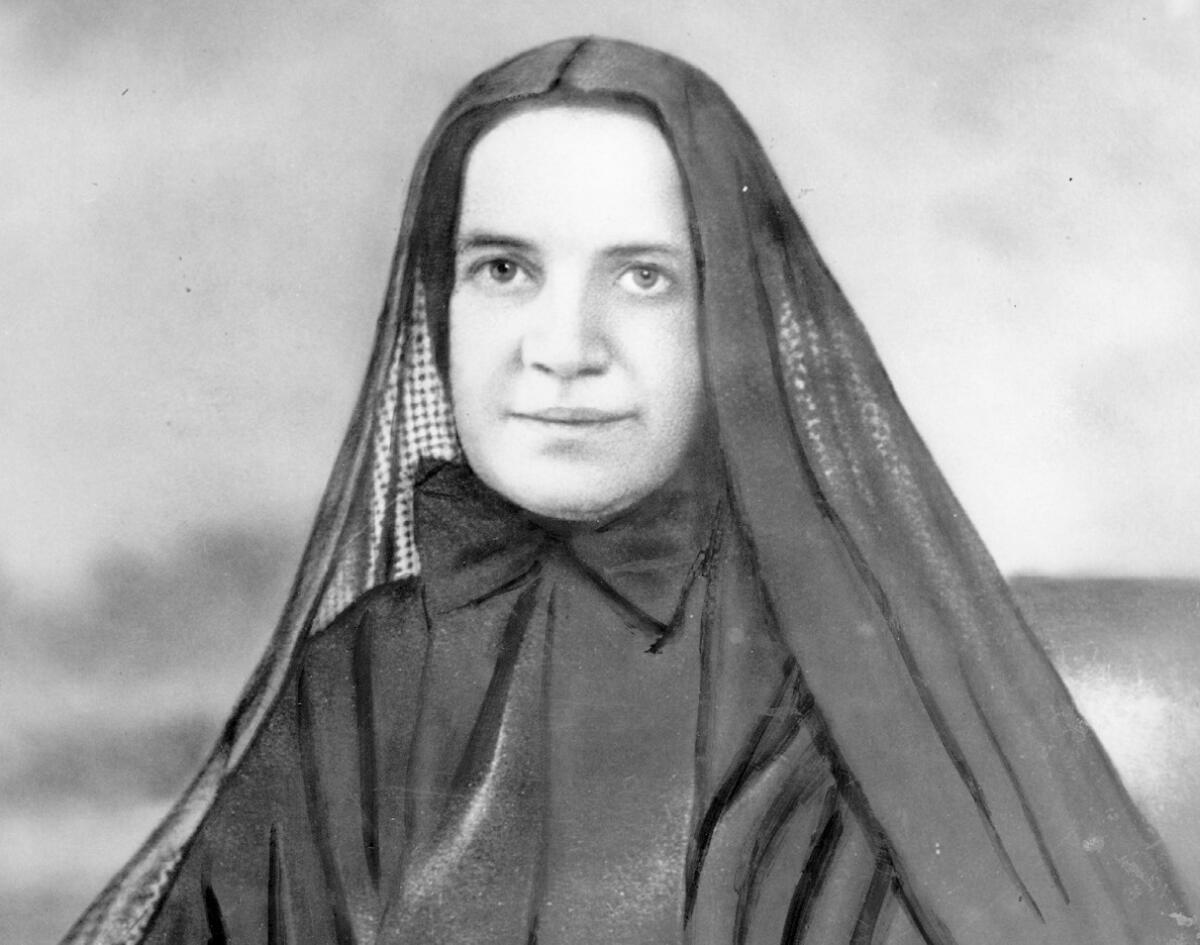
Frances Xavier Cabrini was the first American citizen beatified by the Catholic Church.
1850-1917
The youngest daughter of a cherry farmer from a village near Milan, Italy, Cabrini is known as the patron saint of immigrants. After she co-founded the Missionary Sisters of the Sacred Heart of Jesus in 1880, Pope Leo XIII urged her to become a missionary in the United States. In 35 years, she founded scores of schools, hospitals and orphanages, and organized adult education classes for Italian immigrants.
Canonized in 1946 by Pope Pius XII
Feast day: Nov. 13
St. Marianne Cope
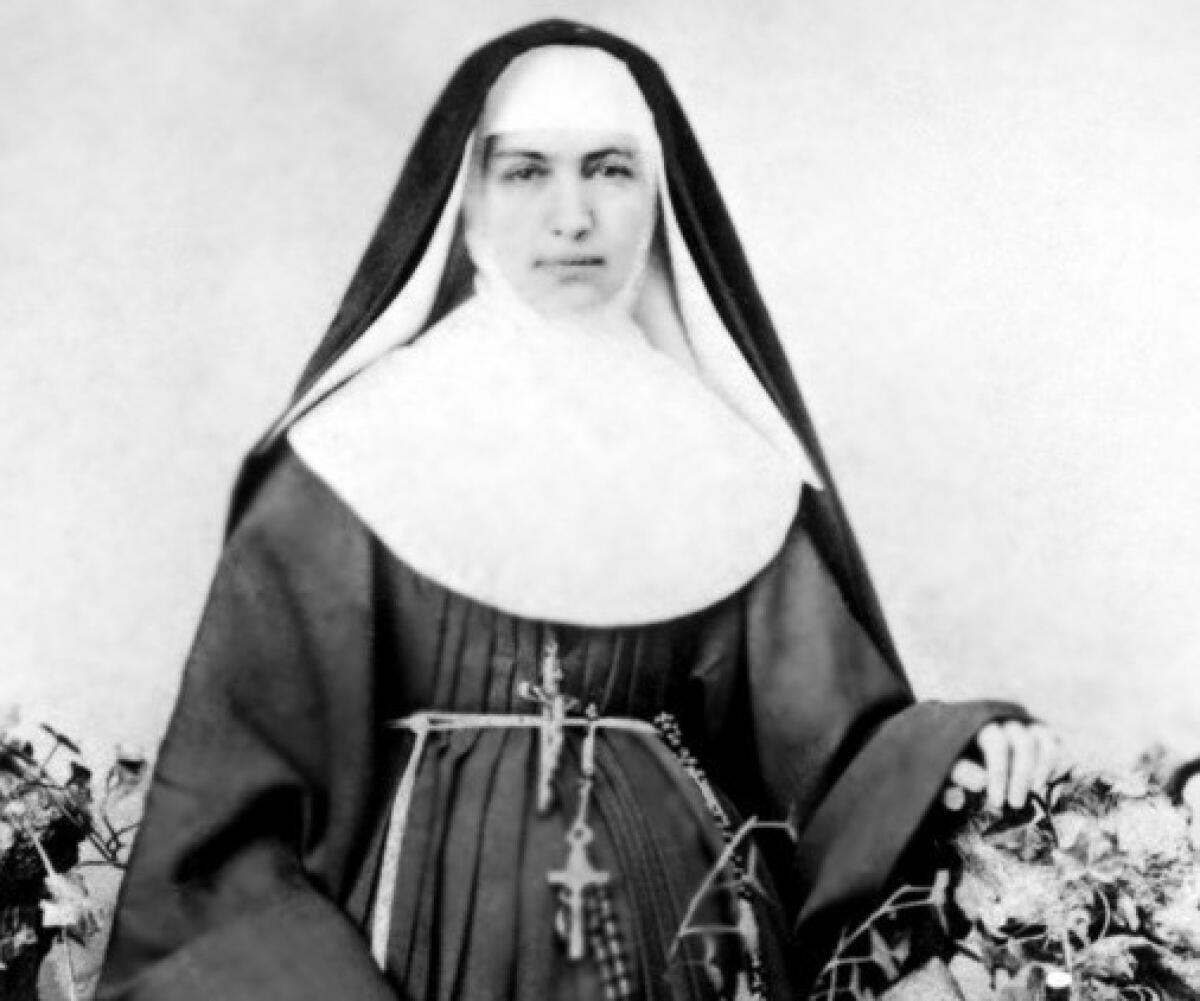
Marianne Cope dedicated her life to caring for exiled leprosy patients in Hawaii.
(Associated Press)
1838-1918
Born in the Grand Duchy of Hesse, now Germany, Cope moved to New York with her family when she was a year old. After working in a factory to support her family, she joined the Sisters of the Third Order of Saint Francis and served as a teacher and principal. In 1883, she and five other sisters volunteered to care for leprosy patients in Hawaii. "I am not afraid of any disease," she said. She served in Hawaii for decades, dying of natural causes in 1918.
Canonized in 2012 by Pope Benedict XVI
Feast day: Jan. 23
St. Damien de Veuster
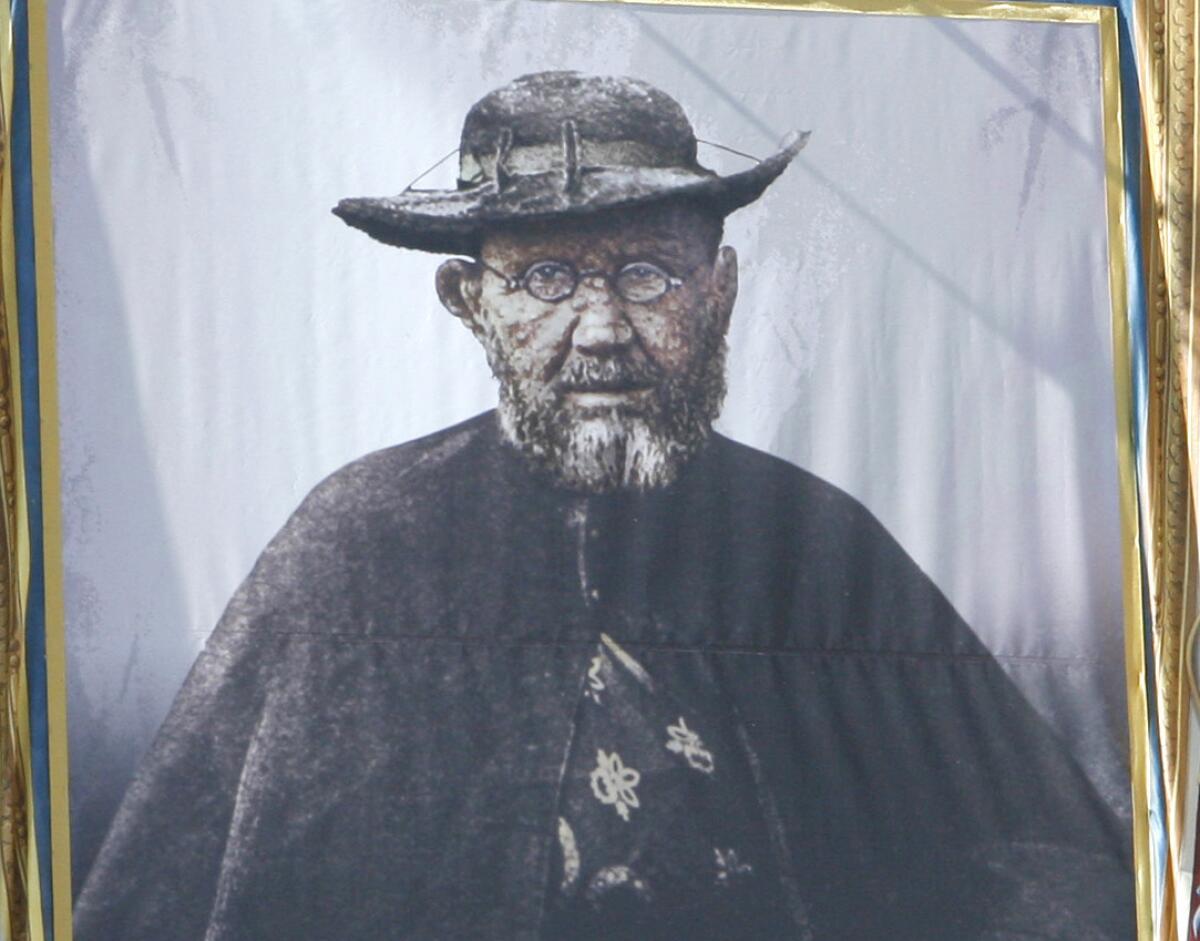
A tapestry at St. Peter’s Basilica depicts Father Damien, born as Jozef De Veuster, who did missionary work among leprosy patients in Hawaii.
(Alessandra Tarantino / Associated Press)
1840-1889
The son of a poor farmer, the Belgium-born priest sailed to Hawaii, where he volunteered to work at a leper colony on the island of Molokai. He eventually contracted the disease and served there until his death. He has "a special place in the hearts of Hawaiians," the Hawaiian-born President Obama said when Damien was canonized. "I recall many stories from my youth about his tireless work there to care for those suffering from leprosy who had been cast out."
Canonized in 2009 by Pope Benedict XVI
Feast day: May 10
St. Katharine Drexel
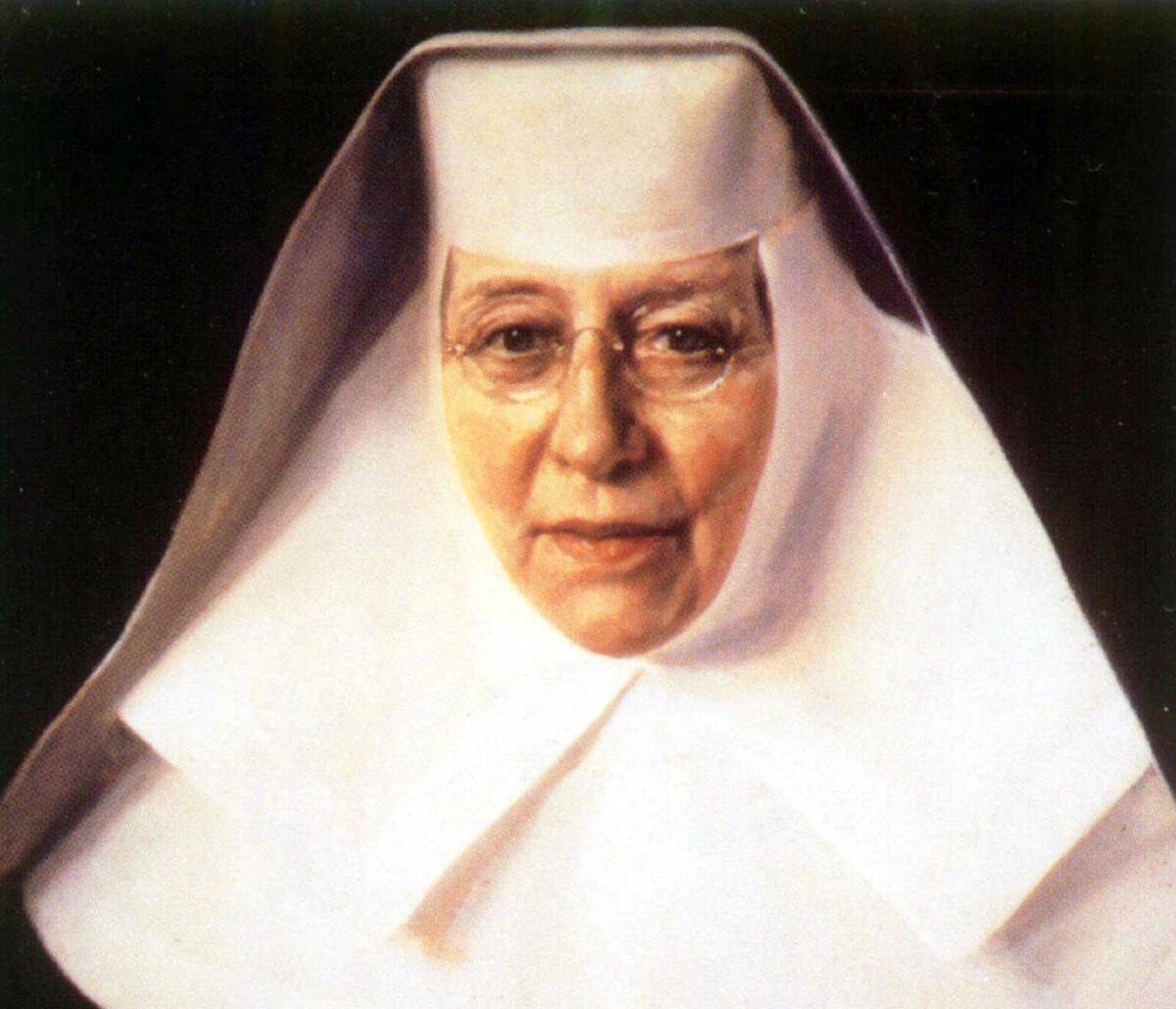
A painting of Blessed Katherine Drexel, founder of the Sisters of the Blessed Sacrament order of nuns, is displayed in Bensalem, Pa.
(Associated Press)
1858-1955
A Philadelphia heiress who became concerned about the plight of Native Americans during a trip West, Drexel founded the Sisters of the Blessed Sacrament in 1891. She established dozens of schools and missions across the West for American Indians as well as African Americans. A key achievement was founding Xavier University of Louisiana in New Orleans, the only historically black Catholic college in the United States.
Canonized in 2000 by Pope John Paul II
Feast day: March 3
St. Rose Philippine Duchesne
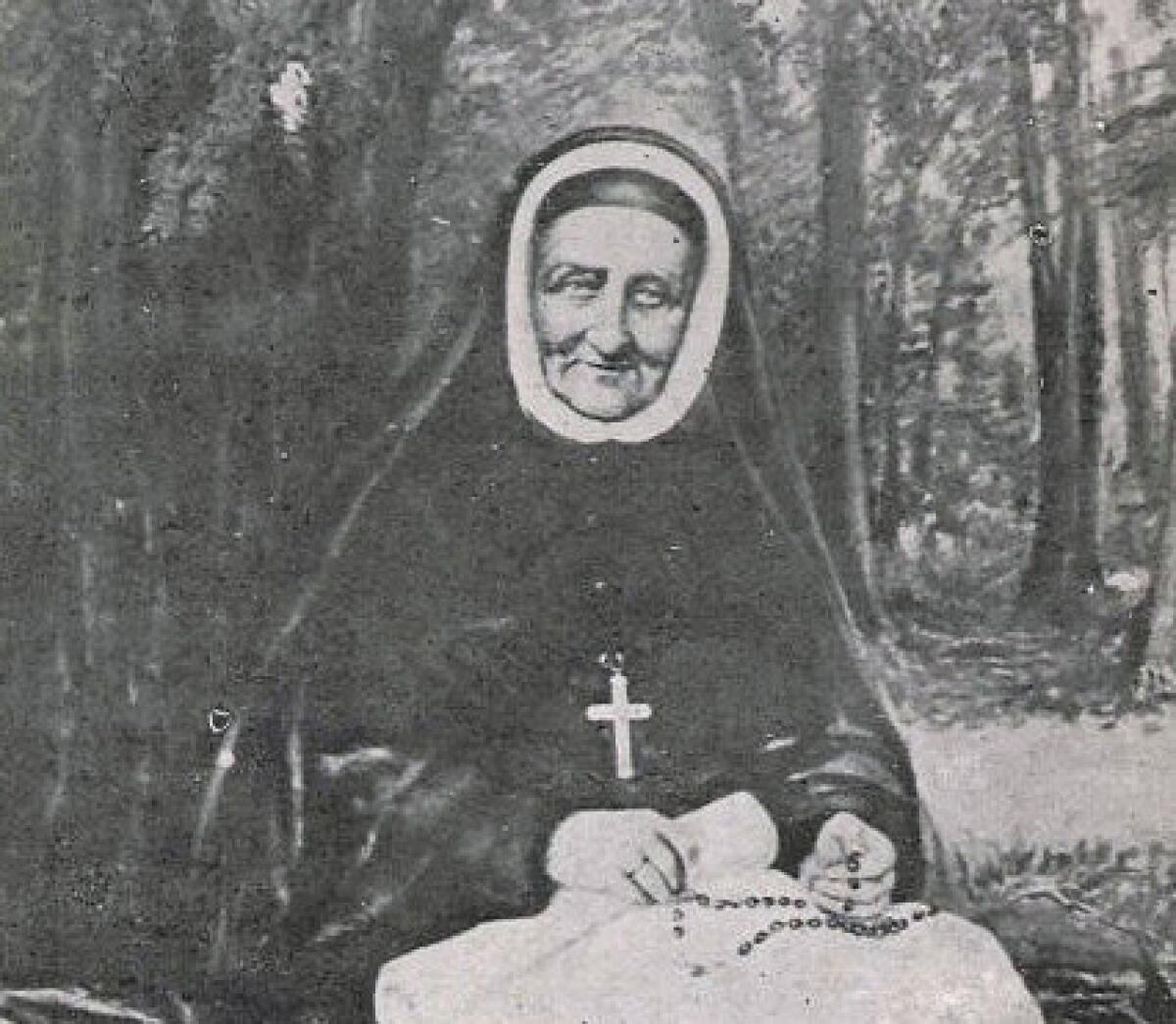
Rose Philippine Duchesne performed missionary work in Missouri and Kansas.
(Project Gutenberg)
1769-1852
After taking her vows as a nun in Grenoble, France, at the age of 19, Duchesne was forced to live as a laywoman for more than a decade when convents were shut down during the French Revolution. In 1804 she became a member of the Society of the Sacred Heart, and in 1818 sailed to the Louisiana Territory. There she opened the first free school for girls west of the Mississippi River, as well as the first Catholic school for Native Americans.
Canonized in 1988 by Pope John Paul II
Feast day: Nov. 18
St. Mother Theodore Guerin
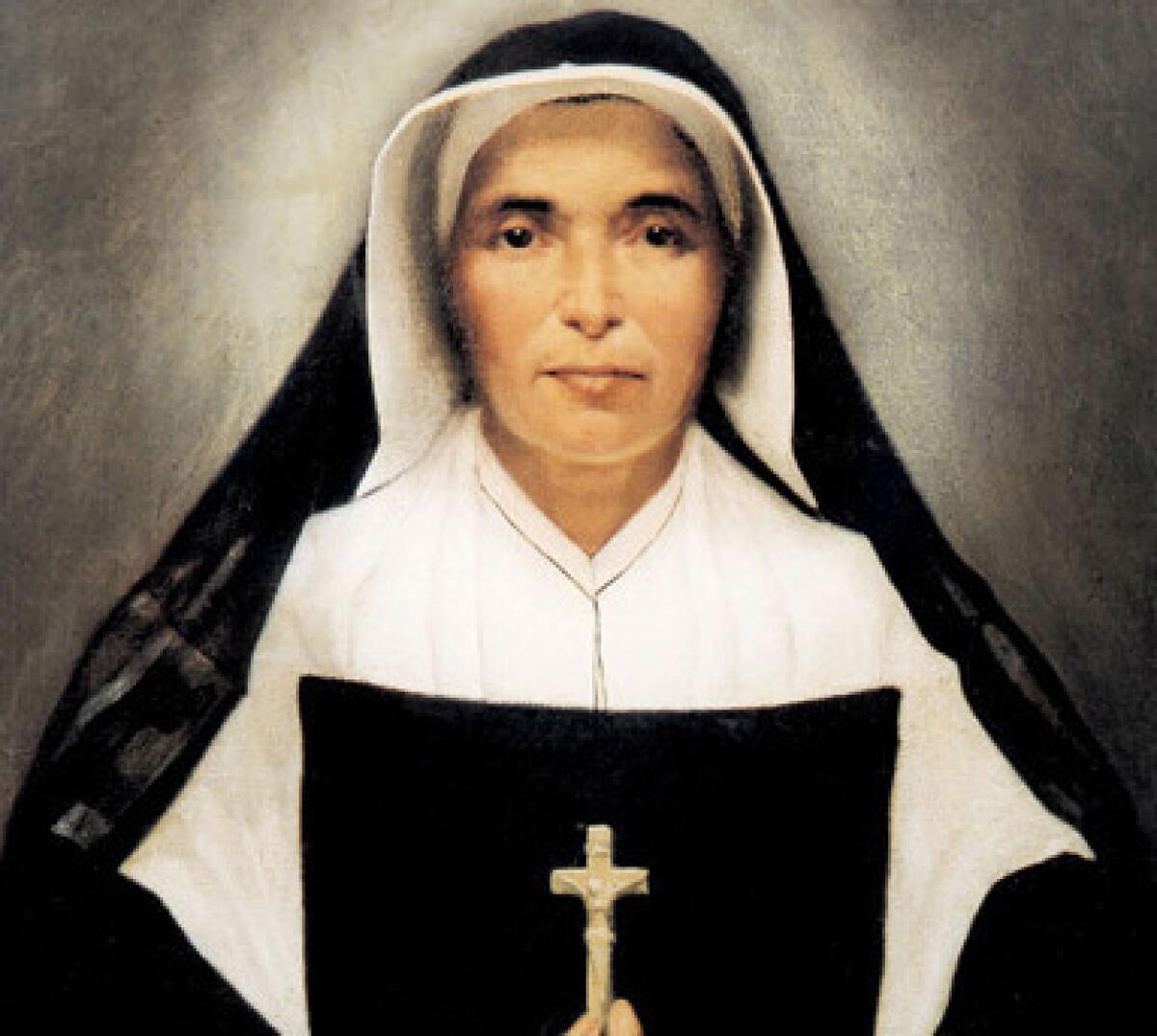
Théodore Guérin, a French nun, led a small band of missionaries in rural Indiana.
(Sisters of Providence)
1798-1856
A French nun of fragile health, Guerin was doubtful when her superiors asked her to sail to America to lead a small band of missionaries in rural Indiana. "It is astonishing that this remote solitude has been chosen for a novitiate and especially for an academy," she wrote in her journal. "All appearances are against it." Yet within a year she opened St. Mary's Academy for Young Ladies and went on to establish schools throughout Indiana and Illinois.
Canonized in 2006 by Pope Benedict XVI
Feast day: Oct. 3
St. Isaac Jogues
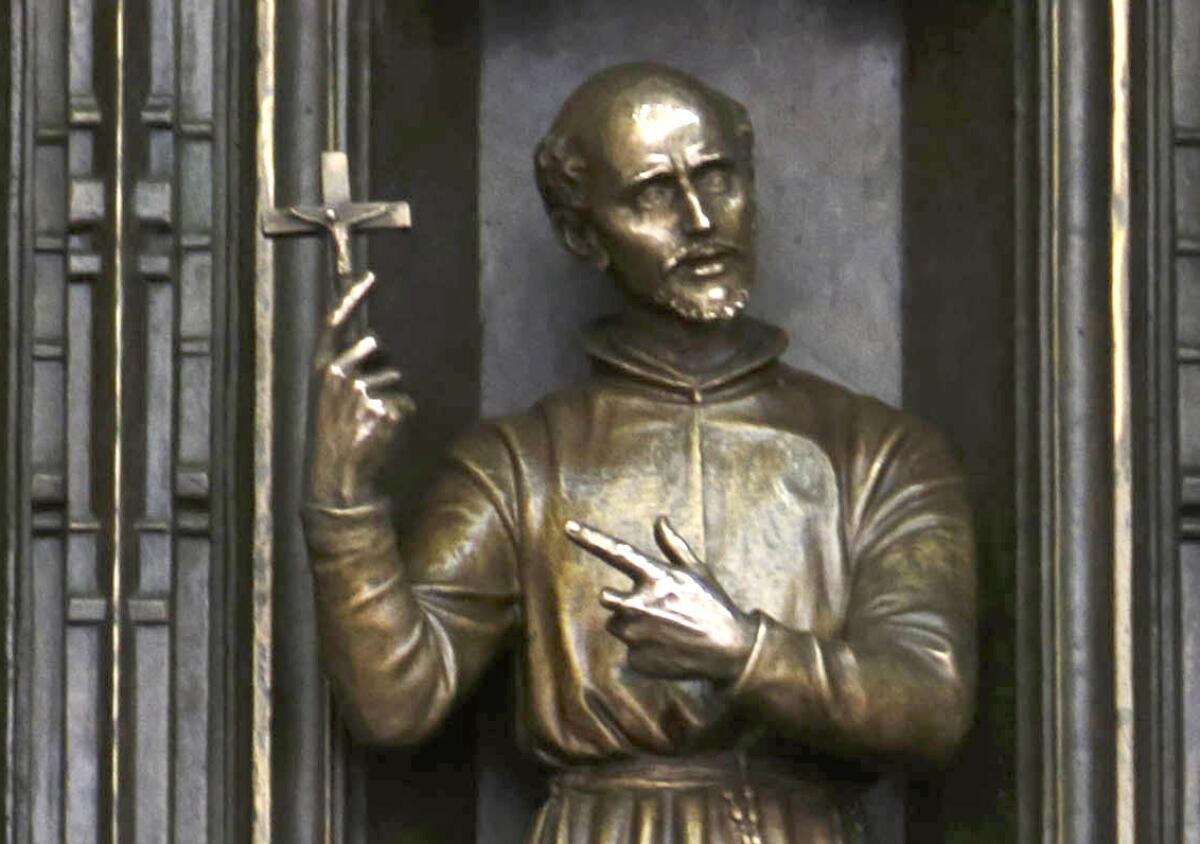
A statue of Isaac Jogues, a Jesuit missionary who worked among Native Americans, stands at St. Patrick’s Cathedral in New York.
(Seth Wenig / Associated Press)
1607-1646
Jogues was a missionary who was enslaved and tortured by Mohawks near present-day Auriesville, N.Y. After a year he managed to board a Dutch ship and return to France, where the priest was celebrated as a living martyr. He traveled to Quebec and in 1646 was entrusted with negotiating peace with his former captors. "My heart tells me that, if I am the one to be sent on this mission, I shall go but I shall not return," he wrote. He was killed with a tomahawk.
Canonized in 1930 by Pope Pius XI
Feast day: Oct. 19
St. John Neumann
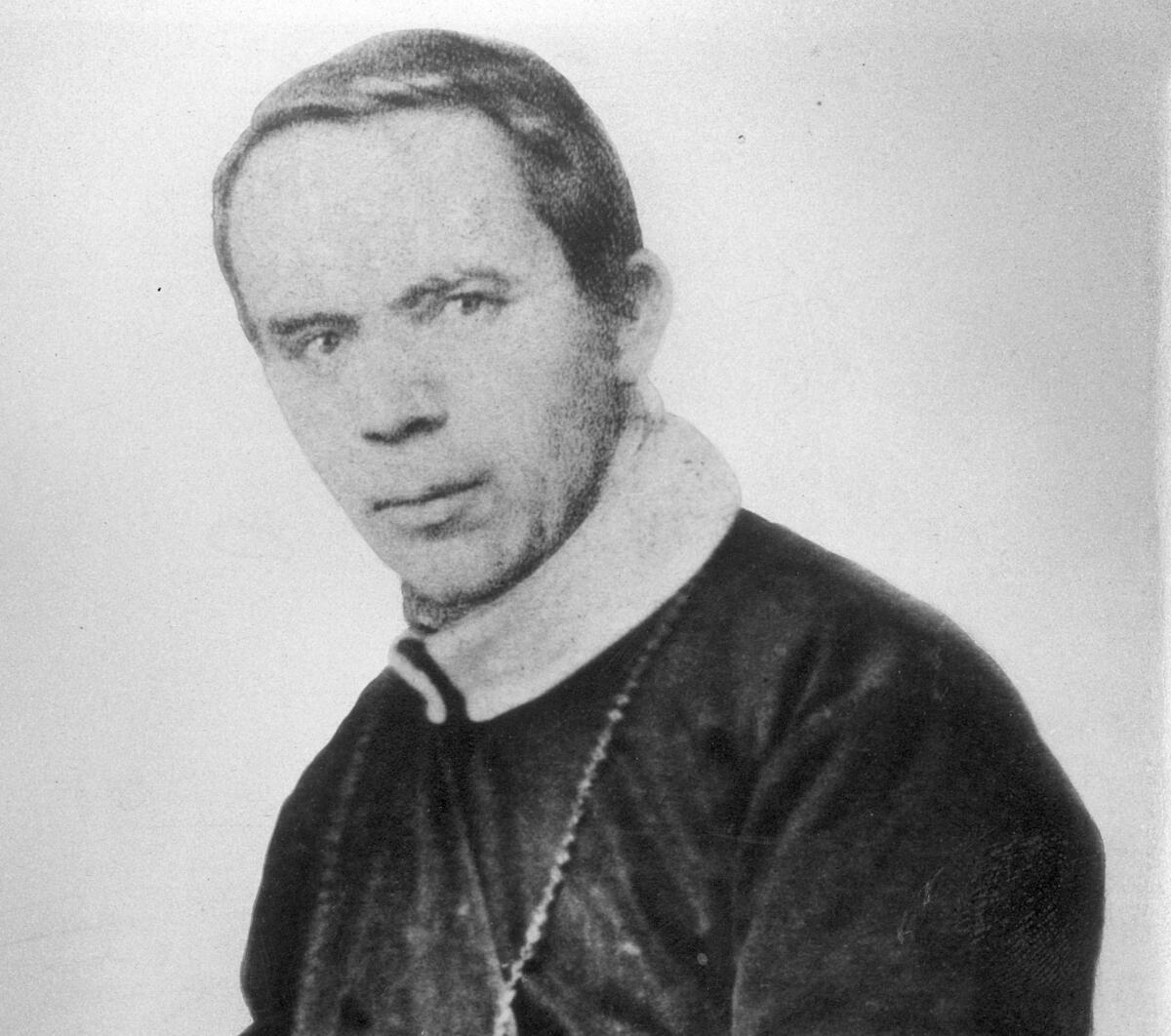
John Neumann was a Philadelphia bishop and was among the founders of Catholic education in the U.S.
1811-1860
Neumann left Bohemia for New York at the age of 25, hoping to be ordained after a bishop declared there were enough priests in his native land. Within three weeks of arrival, Neumann — who was fluent in several languages, including English, Italian and German — was ordained and served German immigrants in the Niagara Falls area. During his eight years as bishop of Philadelphia, the city's Catholic schools grew from two to 100; parish churches were built at a rate of almost one a month.
Canonized in 1977 by Pope Paul VI
Feast day: Jan. 5
St. Elizabeth Ann Seton
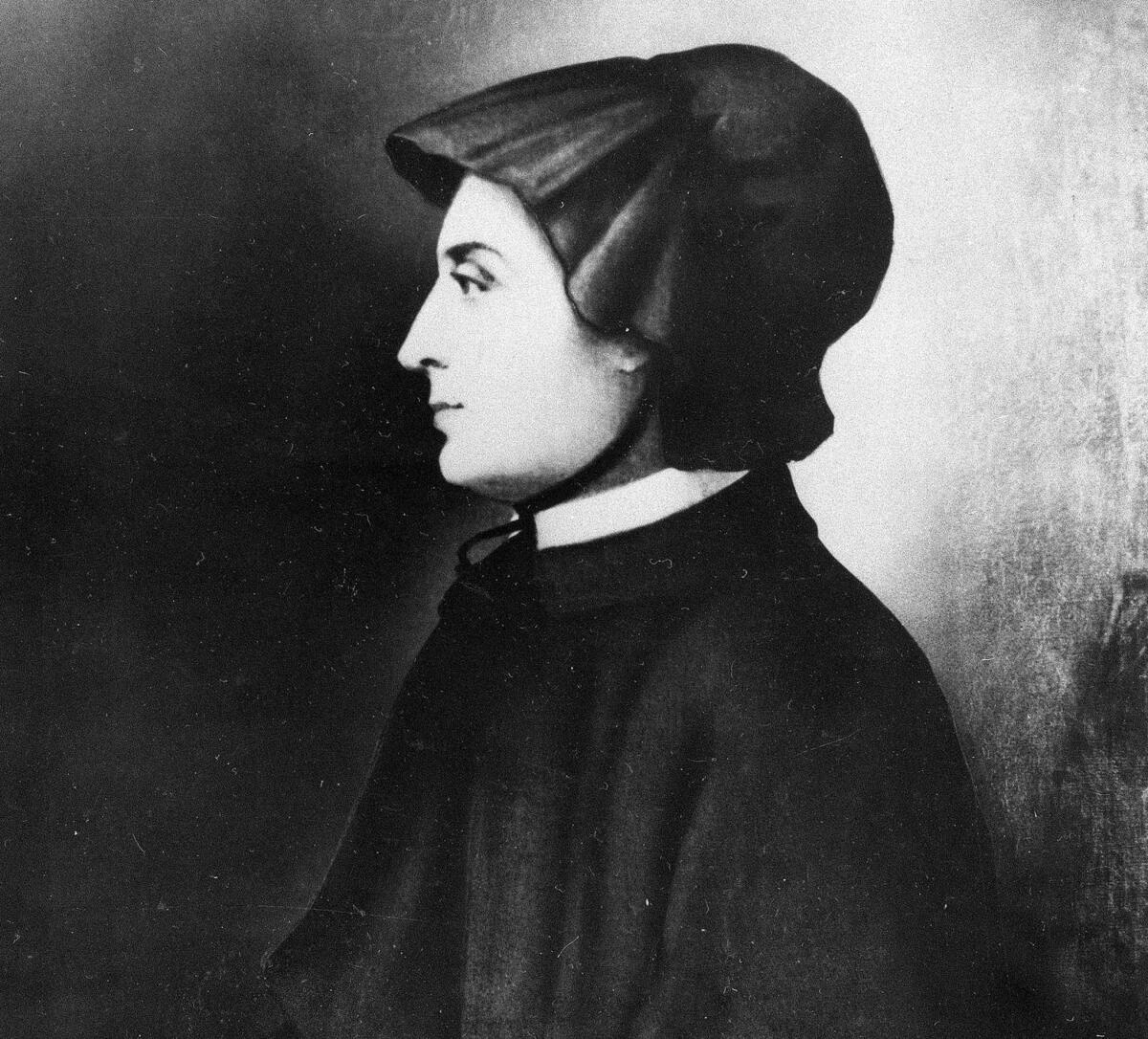
Elizabeth Ann Bayley Seton, founder of the Sisters of Charity of St. Joseph.
(Associated Press)
1774-1821
Born into a prominent Anglican New York family, Seton converted to Catholicism after her husband died of tuberculosis in Italy. A penniless widow with five children, rejected by New York society after her conversion, Seton moved to Maryland and founded the first American religious community for women, the Sisters of Charity of St. Joseph's. She also opened the first free Catholic school in the United States.
Canonized in 1975 by Pope Paul VI
Feast day: Jan. 4
St. Kateri Tekakwitha
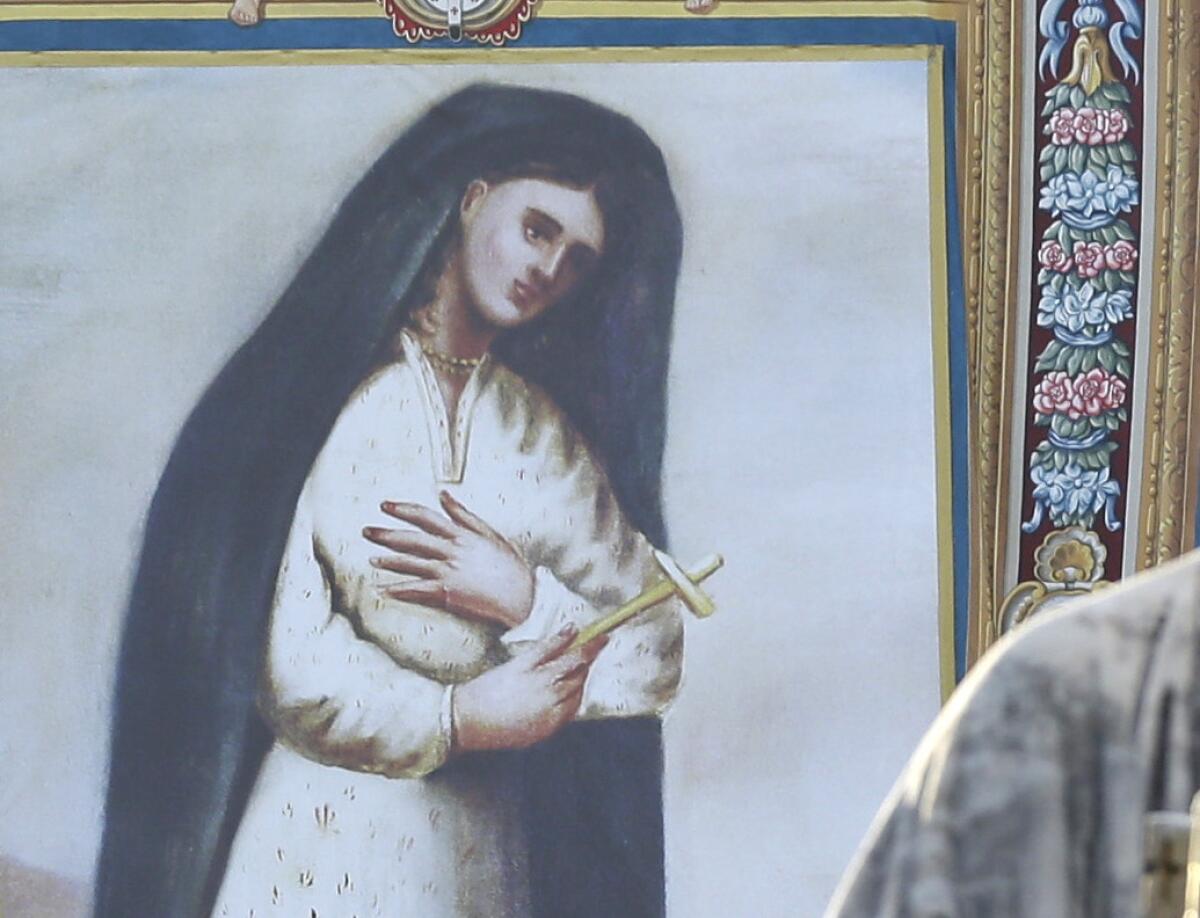
A tapestry of Kateri Tekakwitha, the first Native American to achieve sainthood, hangs from the St. Peter’s Basilica at the Vatican.
(Alessandra Tarantino / Associated Press)
1656-1680
Orphaned at the age of 4 and raised by her uncle, the chief of a Mohawk village in what is now New York, Tekakwitha converted to Catholicism after meeting a priest. Shunned by many in her community, she ran away to a Jesuit mission near what is now Montreal, Canada, where she took a vow of virginity and lived a life of devout prayer and penance. Known as "Lily of the Mohawks," she was the first Native American to be declared a saint.
Canonized in 2012 by Pope Benedict XVI
Feast day: July 14
Sign up for Essential California
The most important California stories and recommendations in your inbox every morning.
You may occasionally receive promotional content from the Los Angeles Times.







